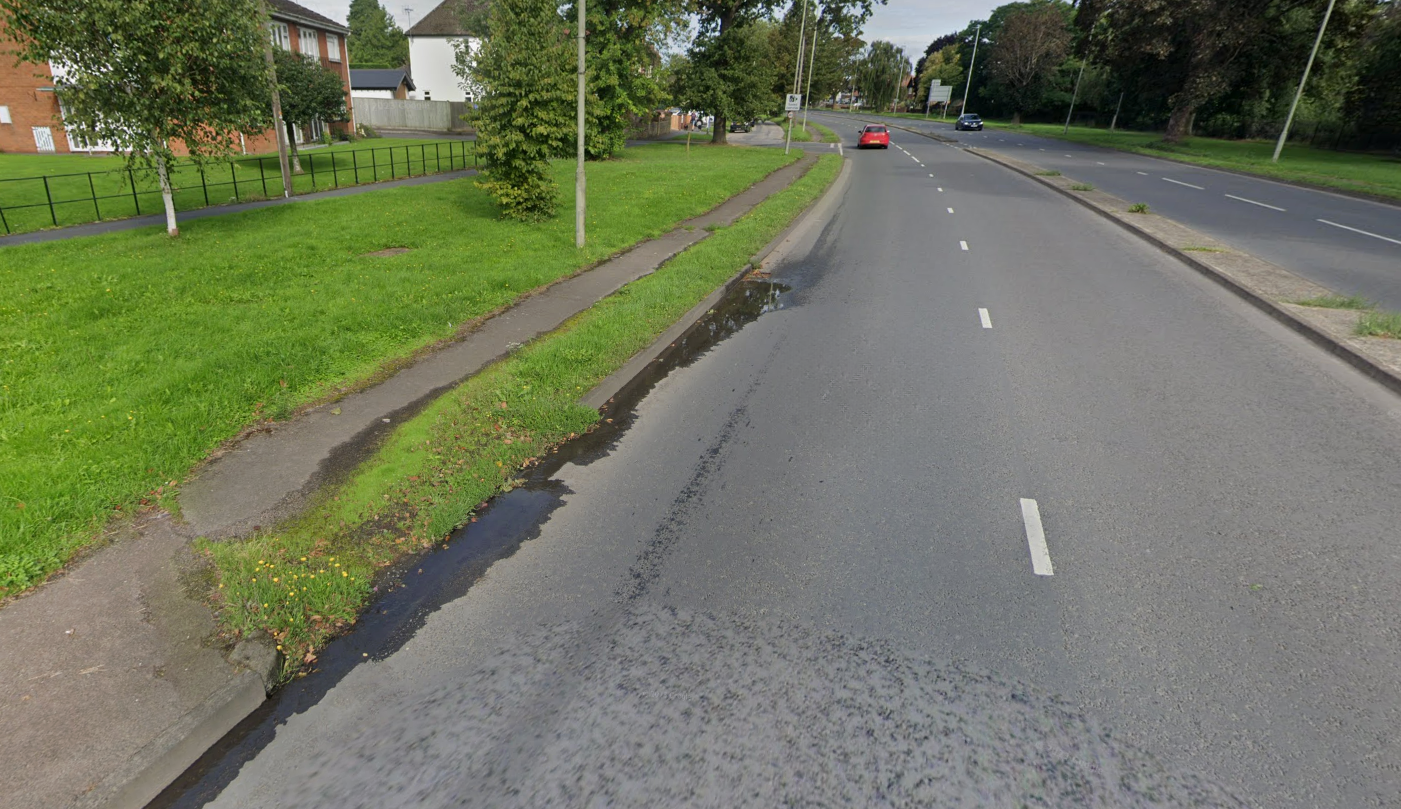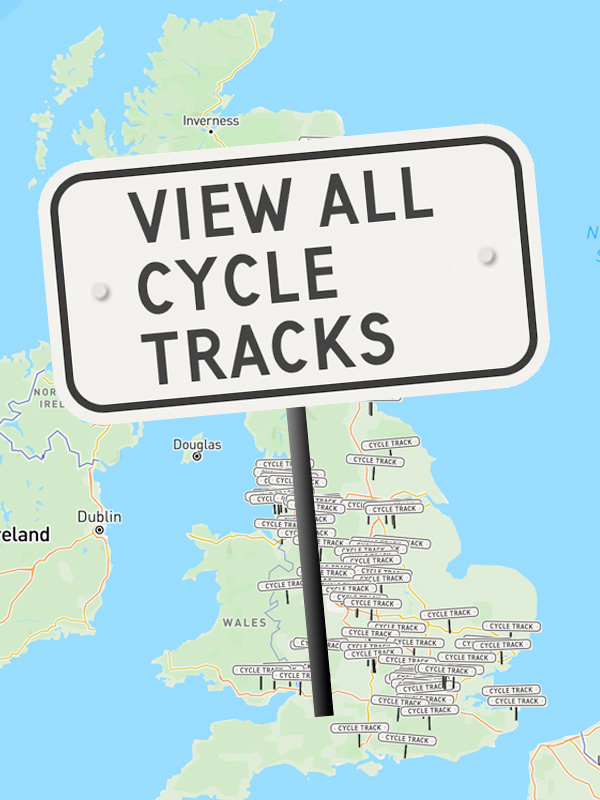
Feeble cycle track.
Estcourt Road, a northern bypass of Gloucester and itself later bypassed by the A40, was planned in 1928 and named for Alderman Estcourt, chairman of the council’s streets committee. The bypass was built in the early 1930s and open by 1933 but then revamped between 1936 and 1938 with the addition of service roads, footways and cycle tracks.
(A southern bypass of Gloucester, planned in 1939 but not built until after the war, was supposed to have cycle tracks similar to those of Estcourt Road and Eastern Avenue but there is no evidence they were built.)
“Estcourt Road has scarcely been opened to traffic,” pointed out the Gloucester Citizen in 1936, “and now it is suggested that it should be done all over again, at great cost, in the lay-out of dual carriage-way and other tracks.”
These “other tracks” included cycle tracks, reported the newspaper the following year.
“The construction of service roads and cycle tracks in the section Estcourt-road between the Tewkesbury-road and Cheltenham-road, is to be recommended to the City Council at its meeting to-morrow,” reported the paper on 27 April 1937.
“It was resolved that the Council,” added the paper, “should be recommended approve of the construction of a service road 16 feet wide and cycle track six feet wide on either side … of Estcourt-road at a total estimated cost of £7,500, subject to the Minister Transport agreeing to make grant 75 per cent towards the cost.”
The cycle tracks were built by the end of November 1938 but the Gloucester Citizen complained they were not being used by the city’s “vast horde” of cyclists.
“All who travel along Gloucester’s by-pass — the Estcourt-road section — must admire its well nigh perfect design for road safety,” beamed an editorial in the paper.
“It has its parallel service roads by which residential delivery and stopping vehicles are withdrawn from the main traffic artery and there are footways and cycle tracks on either side.”
“But,” continued the editorial, “in passing along this model road, at almost any hour of the day, you may see the cycle track deserted except for its casual use as promenade for thoughtless pedestrians, and the motor way still used by speeding cyclists, equally thoughtless or, it may be, resolved to assert the cyclists’ claim of immemorial right to travel the King’s highway.”
Gloucester’s cyclists were an unruly bunch, snarked the paper: “Last night, in the rush and medley of traffic on the road from Brockworth into the City, there was to be observed a couple of cyclists firmly interlocked, and travelling at a fast speed, the boy’s arm round the girl’s waist and the girl’s arm similarly engaged!”
Oh, the horror!
“Gloucester has … at least 15,000 pedal cycles,” estimated the editorial writer, but only a fraction of these would be members of cycling clubs; clubs that ought to teach their members to keep out of the way of superior motorists, you can almost imagine the journalist thinking.
“In some respects, indeed, the cyclists’ organisations may be said to have a pernicious influence, for they stimulate the claims of road right in a vast horde, over whom they can exercise no sort of discipline, and many of whom can and do assert those rights in an ill-regulated and undisciplined manner. That the toll of death and accident is not far greater than it is must be attributed to the care of road users in general.”
And for “road users in general” the writer clearly means motorists, a clique to which he — or she, but it’s probably a “he” — appears to belong.
The period route of the cycle track has today been blocked with trees and pedestrian barriers, with cyclists directed on to a service road.







